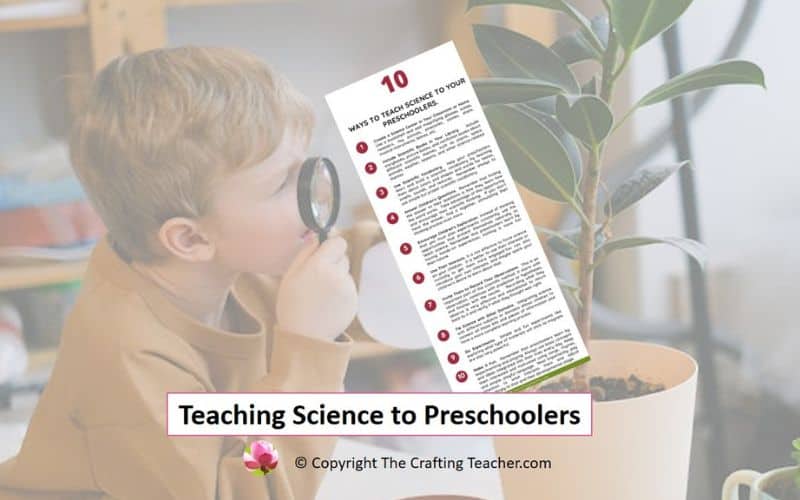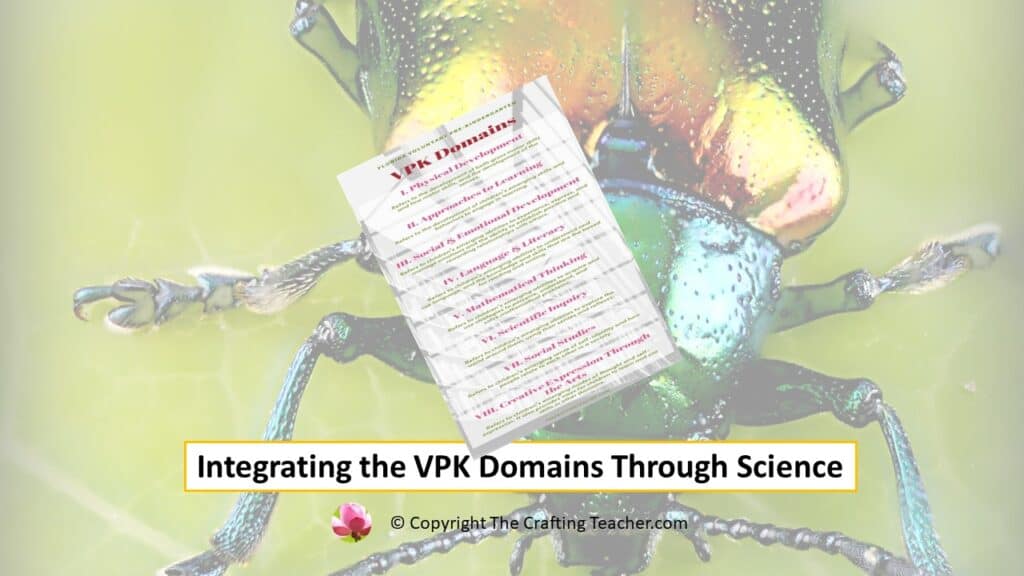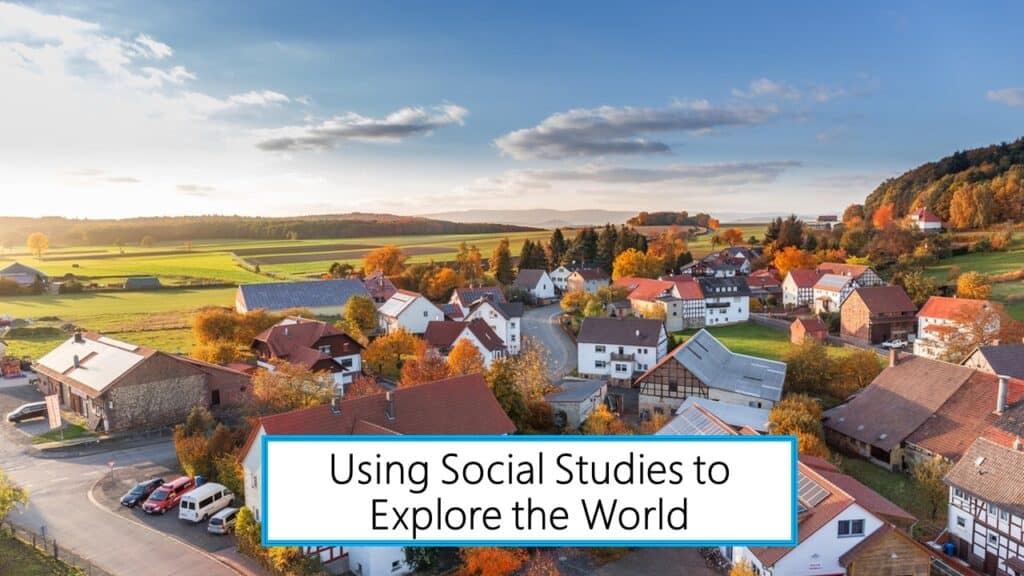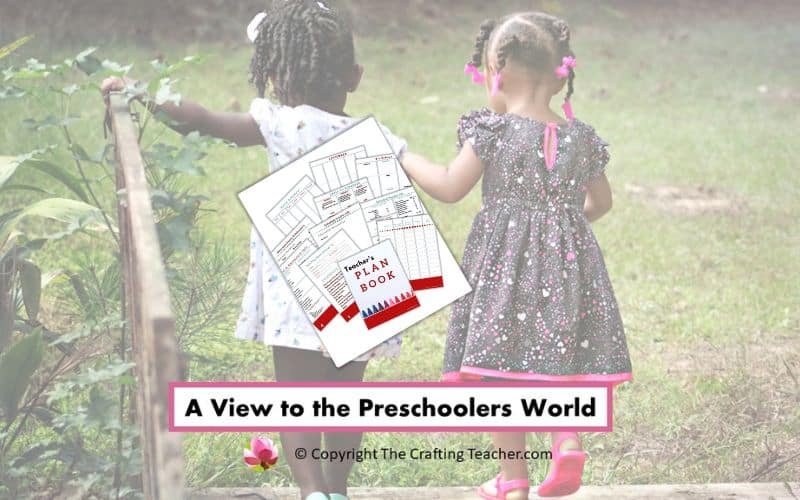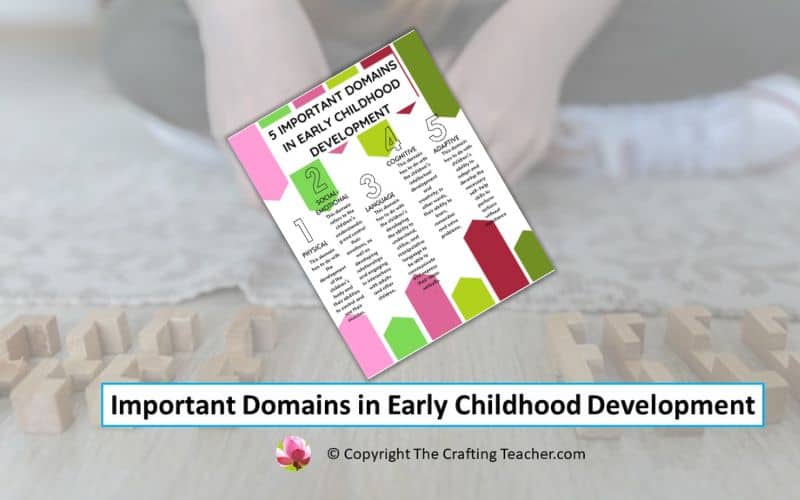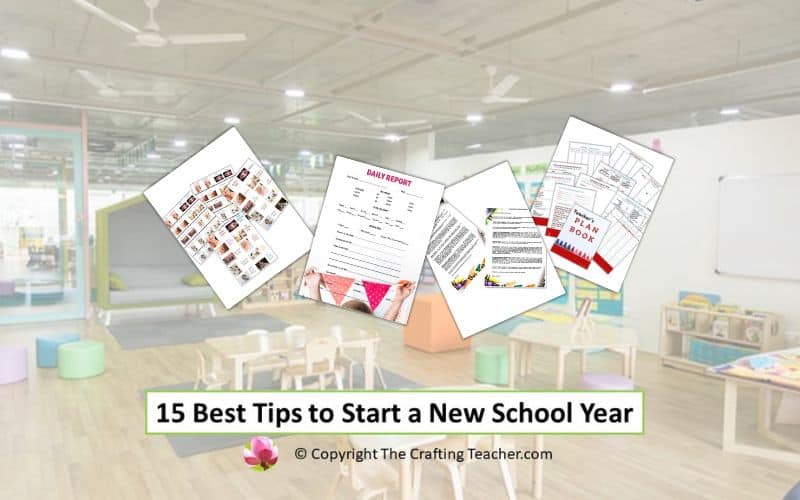Teaching Science to Preschoolers
Affiliate Disclosure: “This post contains affiliate links, which means I receive a small commission, at no extra cost to you, if you make a purchase using those links.”
Many preschool teachers and parents find teaching science very intimidating, and many try to skip or ignore this critical domain, especially when teaching younger children.
Teaching science is not that difficult; most probably, many people already do it without even realizing it. But just doing random activities is not enough. Like any other domain, science has to be purposely planned using hands-on activities. This is how preschoolers learn better because abstract concepts are too complex to understand.
Children are naturally curious about the world around them, and they use all their senses to gather information about the why, what, who, where, and how of things, others, and themselves. Their discoveries have everything to do with real science.
This natural curiosity provides teachers and parents the perfect vehicle to guide their experimentations and investigations through hands-on activities, encouraging them to develop their scientific learning and thinking processes. When they find the answers to their many questions, they satisfy their curiosity and make connections between their minds and what they experience.
Why is Science Important in Preschool?
Children’s curiosity and many questions must have answers to help them understand what is happening around them and make sense of it. We must remember that children use all their senses to connect with the world, and science allows them to observe and experiment to gain the necessary knowledge.
When teachers and parents teach science in a fun and playful way, their children gain that knowledge. It also promotes the development of a scientific mind, fostering curiosity, problem-solving abilities, critical thinking, and observation skills. It also encourages vocabulary, reading readiness, literacy development, and mathematical thinking, setting the foundation for academic success that will last forever.
How to Introduce Science to Preschoolers?
As I said before, abstract concepts don’t make sense to preschoolers. To introduce science and sustain their interest, teachers and parents must use their children’s natural curiosity to their advantage and let their desire to explore and experiment take the front seat in their science lesson planning.
The better way to do this is to answer their questions, ask them questions, and encourage them to do hands-on activities. This will give them plenty of opportunities to engage in scientific discoveries without forgetting to provide tools for the learning process.
Teachers and parents can encourage their children’s curiosity and teach science to their preschoolers in many ways. These are some ideas:
Create a Science Center in Your Classroom or Home
Use a bookshelf and add science tools such as magnifying glasses, scales, binoculars, tweezers, rulers, life cycle spinners and figurines, animal toys, musical instruments, prims, etc. Also, add samples of tangible items such as pine cones, branches, shells, a bird nest, a beehive, stones, and leaves.
Include Scientific Books in Your Library
Include storybooks, picture books, and nonfiction books about different scientific themes, such as plants, space, animals, weather, seasons, etc. Let the children explore these books freely and also use them for storytime.
Use this opportunity to introduce the names, facts, and characteristics of the things that appear in the book’s pictures, ask the children open-ended questions about what you are reading, and answer any questions they might have.
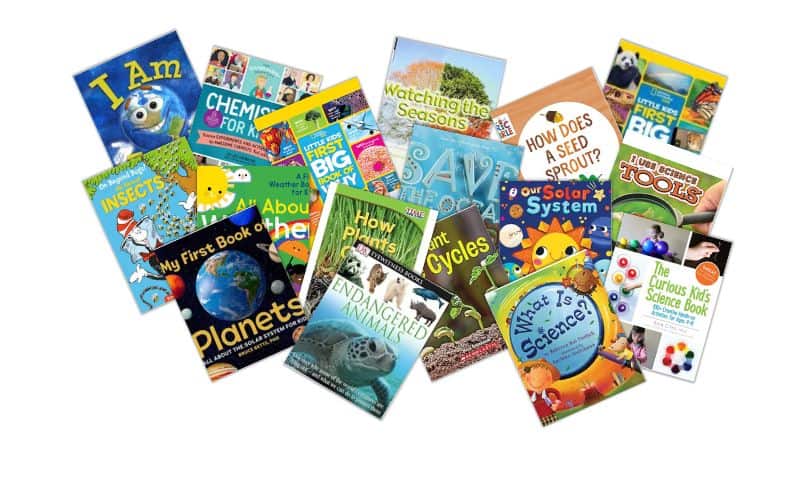
Use Scientific Vocabulary
Help your preschoolers learn and build a scientific vocabulary by teaching them about colors, shapes, and words for tastes, smells, sounds, and textures, always remembering to use simple but proper scientific vocabulary. For example:
- If you are talking about bears going to sleep during winter, use the word hibernation.
- If you are talking about a caterpillar turning into a butterfly, use the word metamorphosis.
- If you demonstrate how water turns into vapor, use the word evaporation.
- For tastes, use sweet, salty, spicy, bitter, sharp, and sour; for smells, use fresh, rancid, smokey, fragrant, aromatic, and acrid; for sounds, use loud, low, strong, and soft; and for textures, use soft, hard, bumpy, smooth, lumpy, and grainy.
Remember that abstract concepts don’t make sense to preschoolers. You have to demonstrate or describe the idea for them to understand. Bring samples and ask questions to encourage the children to use scientific language to talk about the world around them. Also, invite them to divide things into categories. This will help them develop their mathematical skills as well.
Answer Children’s Questions
I know, I know. They all drive us nuts with constant questions, especially the famous “why?” that never ends. Still, we must remember that finding the answer to their questions is how they learn how the world works, and repetition is an integral part of the teaching-learning process.
Take advantage of this opportunity and encourage their scientific thinking. If you don’t have the answer, don’t panic. It lets you find the answer together, stimulating their thinking even more.
Encourage Children Exploration
Instead of thinking that you must always plan experiments, use the opportunities that present themselves naturally to teach science. Remember that preschoolers learn by having hands-on experiences, and nothing is more fun than nature.
By exploring, observing, and experimenting, they can find out the answers to questions they might have, such as:
- What happens when they leave the ice out in the sun?
- Where does the sun go at night?
- Why do we see rainbow colors when we spray water with a hose and expose it to sunlight?
- How is the rain produced?
- Why are the clouds sometimes white and others dark?
Let them examine the natural phenomena that occur every day and everywhere, experiment, try things out, and make discoveries on their own. However, they should also answer their questions, again, using simple and easy scientific vocabulary as much as possible.
The following are some activities you can do with them that will allow this process to occur:
- Take them for nature walks to the park, the beach, or the playground. Let them run around and explore what interests them, talking about the characteristics of the things that catch their attention.
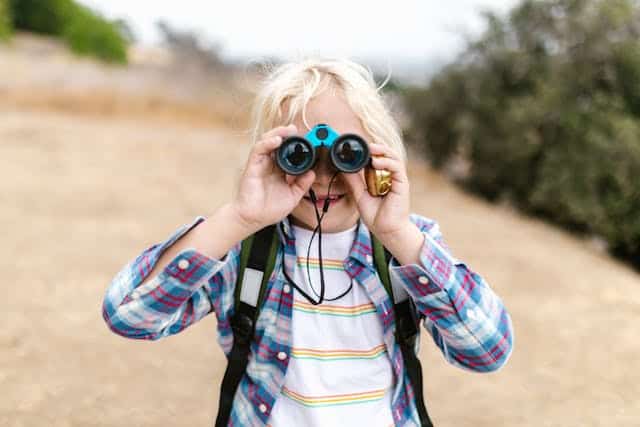
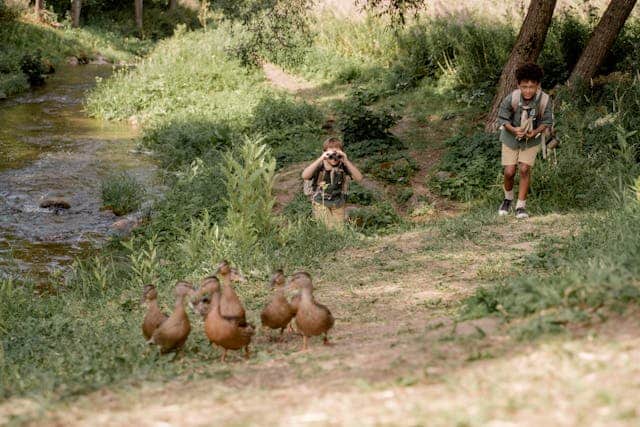
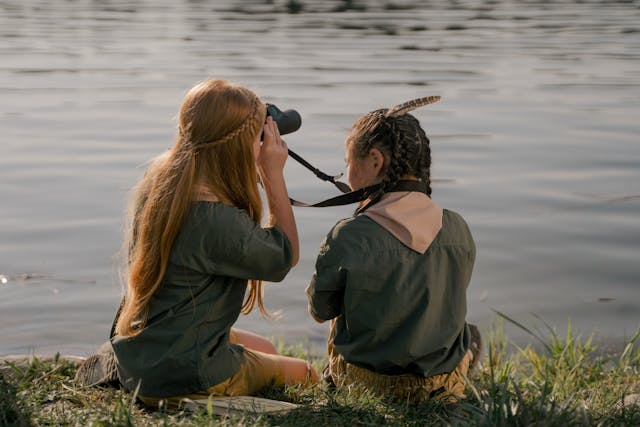
- Start a vegetable garden with them to learn how plants grow from seeds, and have them help you take care of it. Talk about what seeds need to survive, develop, and turn into plants and produce vegetables, fruits, flowers, etc.
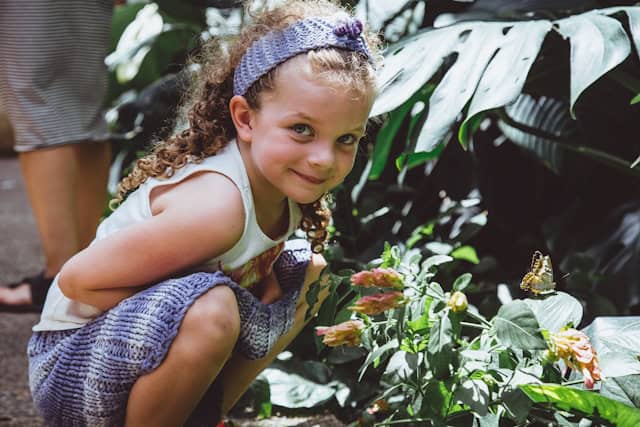
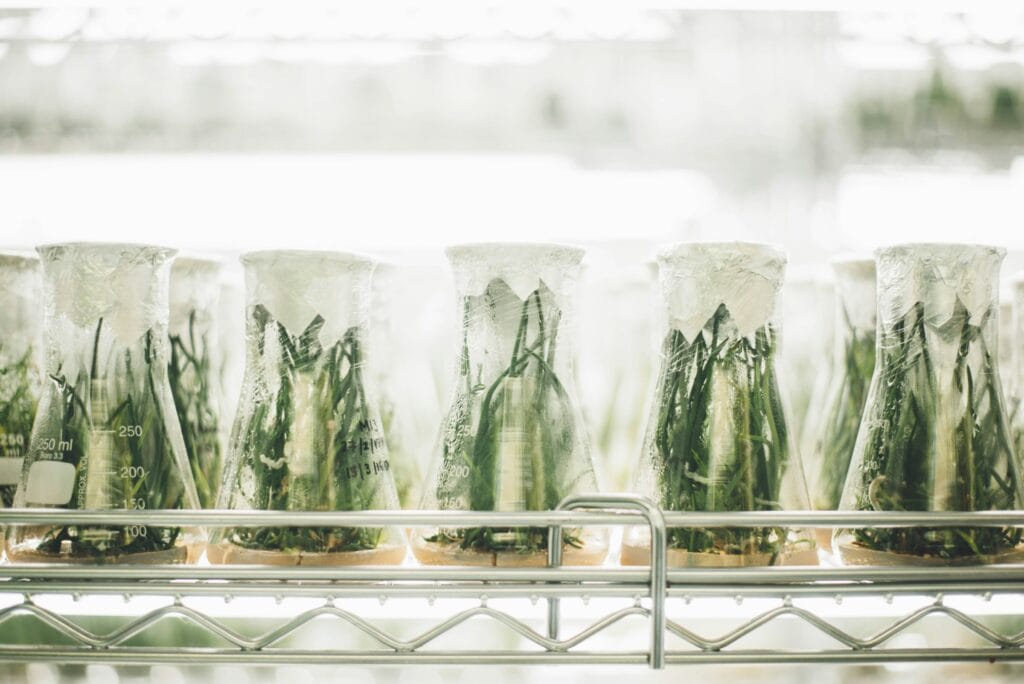
- Show them how the bark differs according to the tree or bush type. Talk about the different textures, colors, and smells. Invite them to compare them and find out what animals live in them.
- Have them observe how ants can carry their weight many times and make anthills, how insects have three body parts and wings, how clouds change shapes, or how the wind carries leaves from one place to the next.
- Bring in an ant farm so your children can observe how ants live, a butterfly garden kit to show your children the marvel of metamorphosis up close, or a frog starter kit so they can observe the incredible transformation of tadpoles into frogs.
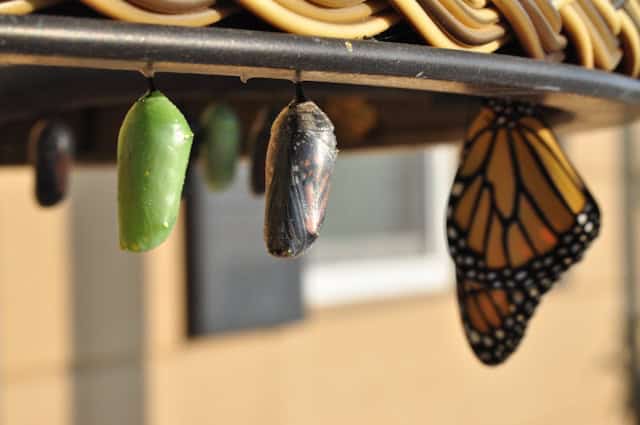
- Experiment with shadows using different surfaces, such as the sidewalk, a wall, a mirror, or a piece of metal, at other times of the day and under various light intensities. Invite them to compare the differences in the shadows and how and where they can be produced.

Use Their Interests
It is not adequate to force science on your children. Using their interests or curiosity is better to engage them more. You can also introduce your interests and maybe spark your children’s desire to learn about them. For example:
- If a fly comes inside the classroom or home and their attention goes to it, drop what you’re doing and use the opportunity to talk about insects, their body parts, how many legs and wings they have, which are beneficial, dangerous, harmful, etc.
- If they find seeds fascinating, have them compare the size, color, and smells of different types of seeds and talk about the plants’ life cycles. Invite them to plant the seeds in various media (soil, wet cotton balls, water) and observe what happens as the days pass. You can encourage their scientific thinking by asking Which seeds start growing first? After one or two weeks… Which sprouts are longer? Are all sprouts the same color? Which ones have more leaves? Which seeds didn’t grow?
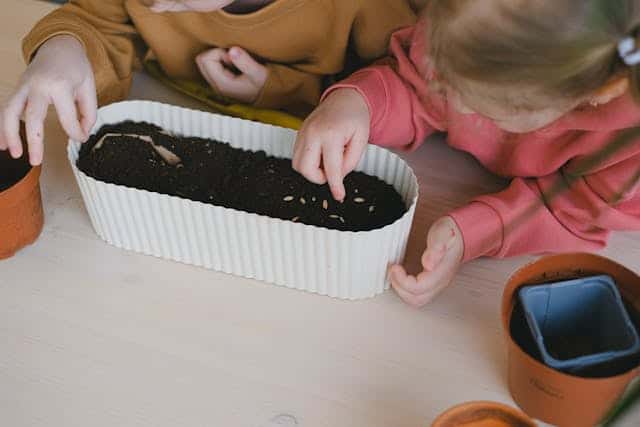
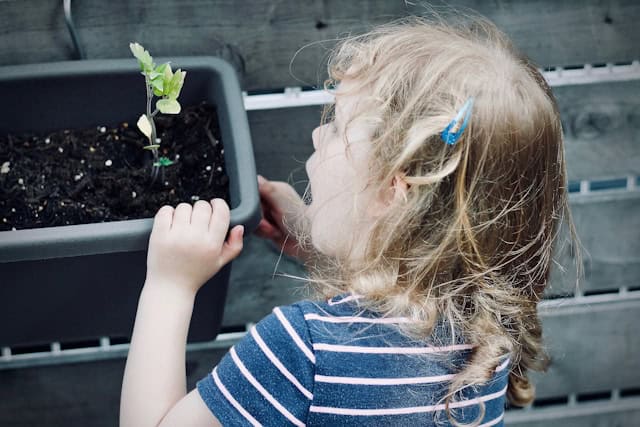
Invite Them to Record Their Observations
This is an integral part of the scientific method. It starts with observation, continues with prediction or hypotheses (the why, what, and how), and finishes with the results.
You don’t have to use this all the time, but it is very effective and educational to record what they observe so that they can revisit it and verify whether what they thought was right is correct. They can draw, take pictures, write, or dictate their thoughts and observations, and you must encourage them to do just that.
Tie Science with Other Domains
Integrating science with different subjects or domains allows your children to connect all those bits and pieces of information and have a more complete learning process.
For example, if you are talking about bees, they can:
- Build a bee out of play-dough (fine motor)
- Draw a bee or create one out of egg cartons (art).
- Count the plastics bees, bees’ legs, or the cells in a beehive (math)
- Read a book or poem about a bee, reenact it, or pretend to be a beekeeper. (dramatic play).
- Review the name and sound of the first letter of the word bee, words that rhyme with bee, write or copy the word bee, spell the word bee, and play the bee alphabet matching game (literacy).
- Taste, smell, and touch honey (sensory).
- Sing and dance to a song about bees (music & movement).
- Race flying like bees (gross motor).
- Observe a real bee or beehive with a magnifying glass (science).
- Build a bee using blocks (block area).
Do Experiments
These experiments could be elementary and fun, but also very powerful. You can do things like:
- Have children test whether ice cubes melt faster in sunlight, in warm water, or on the stove.
- Test different objects in a tub with water to see which one will float or sink.
- Explore what type of materials will stick to magnets.
- Have children combine primary food, tempera, or watercolors (blue, red, and yellow) with a brush to determine which secondary colors result from the mix (yellow and blue = green, yellow and red = orange, and red and blue = purple).
- Invite them to build structures with blocks to test their stability. Talk about gravity. Ask them what they think will happen. Then, after the build, ask questions such as: Why do you think some towers fall and some don’t? Do you think the color of the blocks you used had something to do with that? What will happen if you place one more block atop the tower?
- Place white flowers on tempera-tinted water to see how the color climbs through the stem to the petals.
- Grow an avocado or potato plant by inserting four toothpicks around the avocado seed or potato and placing it on top of a jar with water. Children will see how roots, stems, and leaves start growing. Then, they can plant it in the soil to continue the process.
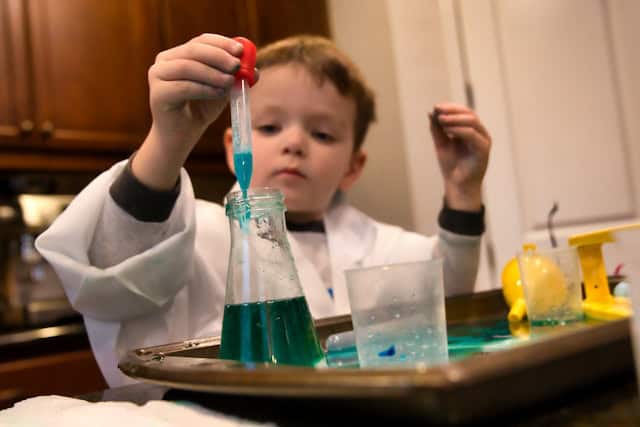
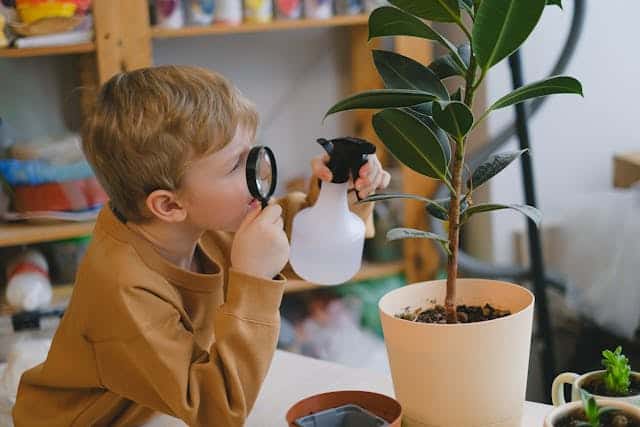

Make It Fun
This is key. Remember that preschoolers learn by experimenting and playing. Always use basic concepts and ideas integrated into their daily lives. Keep them interested and motivated using songs, rhymes, and simple, playful language. Most importantly, pay attention to what interests them and adjust accordingly to their developmental stage.
Remember that you, as preschool teachers and parents, are in a perfect position to nurture your children’s natural curiosity. Don’t be afraid. Just remember to create a safe and positive environment that provides opportunities for exploration and discovery.
Science-related Books
There are many scientific books appropriate for preschoolers. Any book about environmental topics, recycling, protecting the earth, endangered species, energy and water conservation, weather, etc., is ideal for teaching your children about different science-related issues.
Here are some examples to get you started. These books are available at your local library, used bookstore, and on Amazon. If you want to purchase some, my direct affiliate links embedded in the titles will take you to the correct Amazon page in seconds.
- I Am Earth by James McDonald. This book introduces kids to Earth science’s basic concepts while encouraging the importance of caring for our unique planet through environmental awareness and sustainability.
- Eyewitness: Endangered Animals by Ben Hoare is an excellent resource on creatures currently threatened with extinction and how we can help them survive.
- My First Book of Ocean Animals by Ginger L. Clarke is packed with fun facts and photos that teach kids all about the reptiles that crawl on coastlines, the fish that swim underwater, and so much more.
- Save the Ocean by Bethany Stahl. This engaging book teaches children about plastic pollution using beautiful and charming illustrations and teaches them a heartwarming lesson about recycling and conservation.
- First Big Book of the Ocean by Catherine D. Hughes. This National Geographic book is an adorable animal reference that includes the sea’s high-interest animals and introduces kids to some of its lesser-known creatures. It uses more than 100 photos to illustrate the profiles, with facts about the creatures’ sizes, diets, homes, and more.
- My First Book of Planets by Dr. Bruce Bitts takes children on an incredible exploration of planets. It uses fantastic pictures and fascinating facts about what makes each planet unique, including its size, distance from the sun, surface characteristics, number of moons, and more!
- National Geographic Little Kids First Big Book of Science by Kathleen Zoehfeld. Fun activities, games, and simple experiments encourage interactive learning, showing kids that anyone can use scientific observation and experimentation to be a scientist and discover new things. Topics include astronomy, botany, paleontology, malacology (the science of clams, snails, and other animals with shells!), zoology, and more.
- Big Chemistry Experiments for Little Kids by Dr. Megan Olivia Hill, PhD, M.D. This exciting book about science for preschool and kindergarten kids features 20 quick and easy chemistry projects that your little learners will want to try repeatedly.
- National Geographic Little Kids First Big Book of Why by Amy Shields. Using an interactive question-and-answer format and content grounded in a child’s immediate world, this book delivers lively information, hands-on games, simple recipes, crafts, and more. It invites children to ask big questions, think big thoughts, and get accurate, engaging, level-appropriate answers based on sound educational findings.
- How Does a Seed Sprout? by Eric Carle. In this nonfiction story, children explore the transformation of a seed into a tree, featuring simple text and Eric Carle’s classic illustrations!
- On Beyond Bugs! All About Insects by Tish Rabe. This book combines beloved characters, engaging rhymes, and Dr. Seuss’s illustrations to introduce children to non-fiction facts about insects, how ants can lift things ten times their weight, how bees communicate by dancing, why flies buzz, and much more!
- All About Weather by Huda Harajli. From the warm, balmy days of summer to the cold, crisp nights of winter, this colorful book teaches kids all about the four seasons, how clouds form, why it rains, what causes rainbows and storms, and the meteorological magic happening around them every day.
- Watching the Seasons by Adana Eckhart. Simple text introduces facts about the four seasons.
Pin It for Later
If you are in a rush and don’t have time to read the post and download the printable but want to save it for later, pin it to one of your Pinterest boards to have it available when needed.
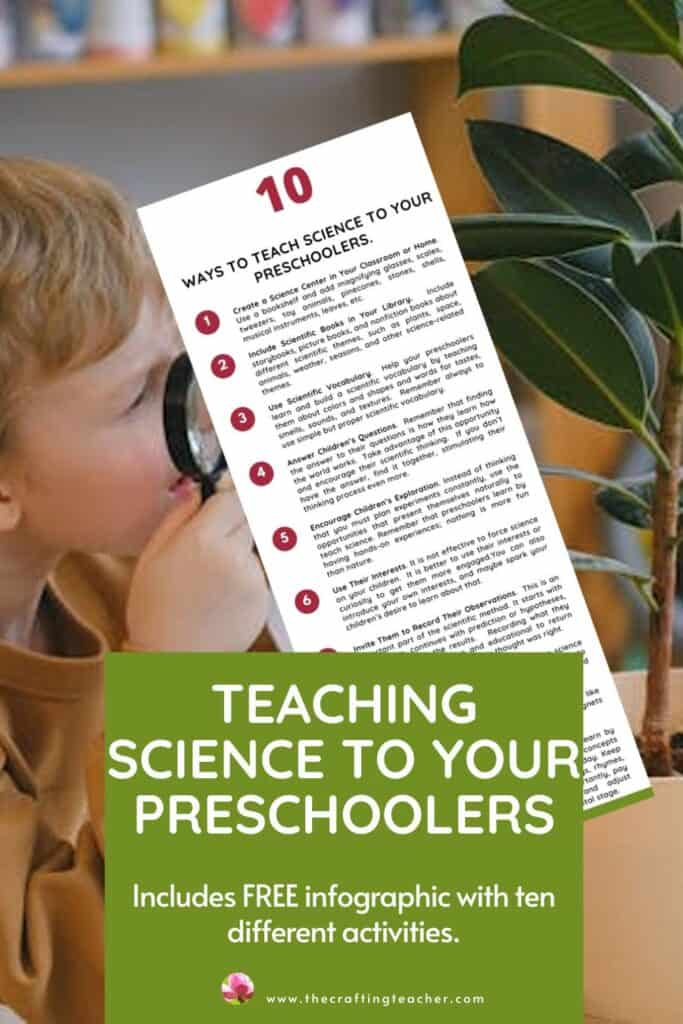
I added a FREE infographic with ten ways to teach science to your preschoolers. Click on the button below, type your information, and you will get your download immediately.
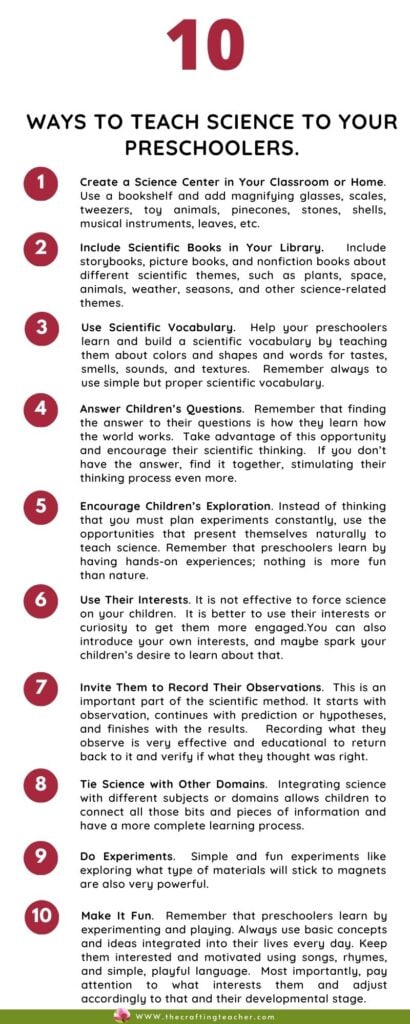
Science in the preschool classroom or home does not have to be complicated or used daily. It does not have to be scary or over the top, simply because of a child’s natural fascination for their world.
Suppose teachers and parents take advantage of this fascination. In that case, preschoolers will have fun while learning meaningfully, encouraging them to actively explore and investigate things in and out of the classroom for the rest of their lives.
Be happy, safe, and creative. I wish you well.
Love,

P.D. Please let me know if you find the ideas valuable and if I can help you with anything else.

